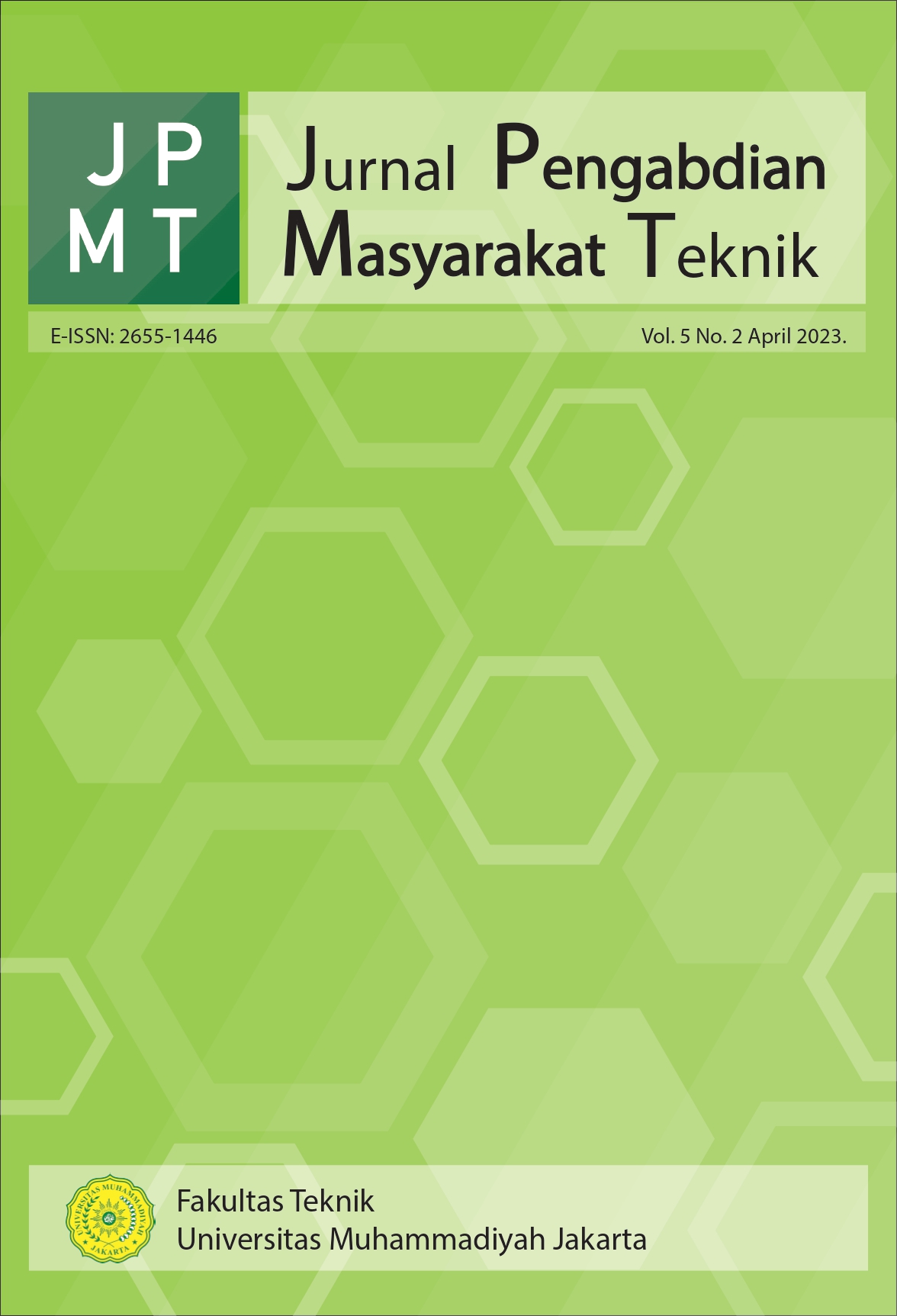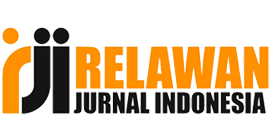MITIGASI PENGURANGAN RISIKO BENCANA BANJIR DI DESA CIPAYUNG KEC. MEGAMENDUNG. KAB. BOGOR MENGGUNAKAN TEKNOLOGI INTERNET OF THINGS (IoT)
DOI:
https://doi.org/10.24853/jpmt.5.2.98-103Keywords:
Sungai ci Esek, Banjir, sistem, sensor, internetAbstract
Sungai ci Esek merupakan sungai yang terletak di desa Cipayung kecamatan Megamendung Kabupaten Bogor yang memiliki arus yang besar terutama ketika hujan. Beberapa bagian desa dan desa lainnya yang berada di sekitar desa Cipayung merupakan daerah terdampak banjir. Pada kegiatan pengabdian masysrakat ini tim dari Universitas Bhayangkara Jakarta Raya telah berhasil mengembangkan system monitoring potensi banjir sebagai salah satu langkah mitigasi bencana daerah di kabupaten bogor. System ini terdiri dari perangkat sensor yang dapat mengukur ketinggian permukaan sungai dan curah hujan dimana data-data fisik ini dikirimkan ke Internet. Akses data potensi banjir ini dapat dilakukan secara real time dan jarak jauh menggunakan perangkat mobile dan computer internet. System ini juga telah diuji dilapangan dengan pemasangan perangkat sensor di pinggir sungai ci Esek dimana rata-rata data yang dikumpulkan setiap hari sebesar 1429. Persentasi kehilangan data adalah 0,75%. Ini membuktikan system dapat digunakan sebagai salah satu upaya preventive dalam menghadapi potensi banjir di Kabupaten Bogor.References
Abana, E. et al. (2020) ‘Tetra-parameter fish feeding machine’, International Journal of Circuits, Systems and Signal Processing, 14. doi: 10.46300/9106.2020.14.118.
Chanak, P. and Banerjee, I. (2020) ‘Congestion Free Routing Mechanism for IoT-Enabled Wireless Sensor Networks for Smart Healthcare Applications’, IEEE Transactions on Consumer Electronics, 66(3). doi: 10.1109/TCE.2020.2987433.
Li, C. et al. (2019) ‘Light-Weight Spliced Convolution Network-Based Automatic Water Meter Reading in Smart City’, IEEE Access, 7. doi: 10.1109/ACCESS.2019.2956556.
Muangprathub, J. et al. (2019) ‘IoT and agriculture data analysis for smart farm’, Computers and Electronics in Agriculture, 156. doi: 10.1016/j.compag.2018.12.011.
Muhendra, R. et al. (2017) ‘Development of WiFi Mesh Infrastructure for Internet of Things Applications’, in Procedia Engineering. doi: 10.1016/j.proeng.2017.03.045.
Muhendra, R., & Amin, A. (2021). Real-Time Monitoring: Development of Low Power Fire Detection System for Dense Residential Housing Based on Internet of Things (IoT) and Cloud Messenger. Scientific Journal of Informatics, 8(2), 202-212.
Prayetno, E. et al. (2021) ‘PLTD Engine Tank Oil Volume Monitoring System using HC-SR04 Ultrasonic Sensor Based on Internet of Things (IoT)’, International Journal of Electrical, Energy and Power System Engineering, 4(1). doi: 10.31258/ijeepse.4.1.134-138.
Sanneman, L., Fourie, C. and Shah, J. A. (2021) ‘The State of Industrial Robotics: Emerging Technologies, Challenges, and Key Research Directions’, Foundations and Trends® in Robotics, 8(3). doi: 10.1561/2300000065.
Siahaan, A. P. U. et al. (2018) ‘Arduino Uno-based water turbidity meter using LDR and LED sensors’, International Journal of Engineering and Technology(UAE), 7(4). doi: 10.14419/ijet.v7i4.14020.
Song, T. et al. (2021) ‘Towards Smart Cities by Internet of Things (IoT)—a Silent Revolution in China’, Journal of the Knowledge Economy, 12(2). doi: 10.1007/s13132-017-0493-x.
Susilawati, S. and Sitohang, S. (2020) ‘The Design Of Arduino Prototype For Monitoring Septic Tank Using Message Gateway’, JEEMECS (Journal of Electrical Engineering, Mechatronic and Computer Science), 3(2). doi: 10.26905/jeemecs.v3i2.4404.
ThingSpeak (2020) ‘IoT Analytics - ThingSpeak Internet of Things’, ThingSpeak.
Downloads
Published
Issue
Section
License
Authors who publish with this journal agree to the following terms:
- Authors retain copyright and grant the journal right of first publication with the work simultaneously licensed under a Creative Commons Attribution License that allows others to share the work with an acknowledgement of the work's authorship and initial publication in this journal.
- Authors are able to enter into separate, additional contractual arrangements for the non-exclusive distribution of the journal's published version of the work (e.g., post it to an institutional repository or publish it in a book), with an acknowledgement of its initial publication in this journal.
- Authors are permitted and encouraged to post their work online (e.g., in institutional repositories or on their website) prior to and during the submission process, as it can lead to productive exchanges, as well as earlier and greater citation of published work (See The Effect of Open Access).






